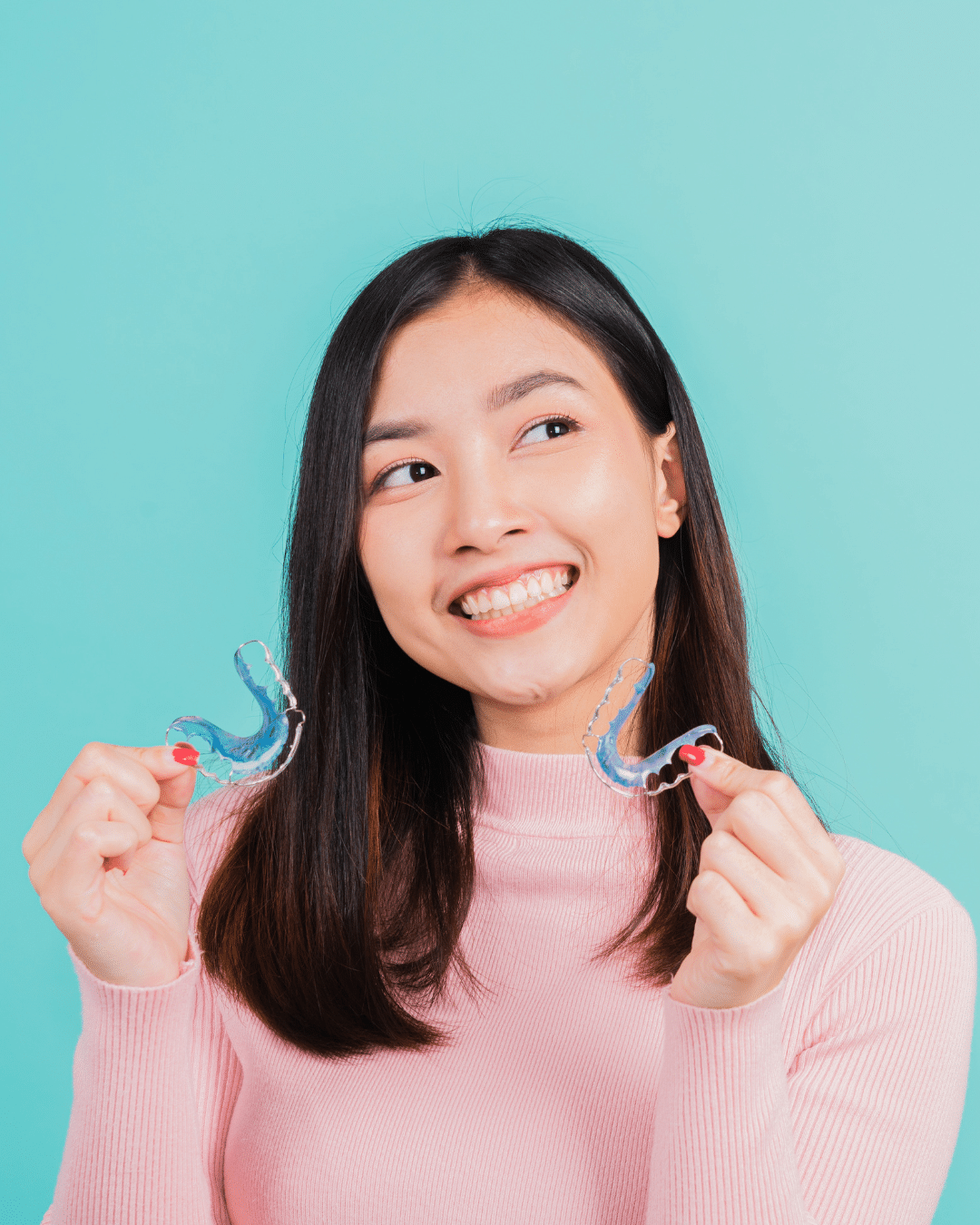Removable Retainers
Once the active orthodontic appliances are removed, the patient will receive retainers to stabilize the dental correction. Because the bone and soft tissues surrounding the teeth are stabilizing for several months after braces are removed, it is imperative that the retainers are worn as instructed. Failure to wear the retainers may result in undesirable movement of the teeth, which could necessitate re-treatment.
How Retainers After Braces and Invisalign are Worn
Without a doubt, teeth will tend to shift back to their original positions very quickly, without the gentle reminder of retainers. At this moment in technology and understanding of physiology, teeth will move for the remainder of one’s life. Studies have demonstrated that despite the timing of treatment, number of treatments, type of treatment, age, gender, etc., teeth will move. They inevitably fall victim to forces, whether it be the tongue, cheek musculature, habits, or the list continues.
Therefore, Dr. Lara Minahan reinforces that retainers should be worn nightly for a lifetime. This is one habit worth having! Immediately upon completing orthodontic treatment, you will be prescribed full-time wear; we are dedicated to your understanding of the value of exceptional retainer wear.
How to Care for Retainers
- Retainers are made of a thermoplastic material that is sensitive to excessive heat, so they should be kept away from heaters, dishwashers, car dashboards, or any place where the temperatures exceed 115 degrees (Fº).
- Retainers should be kept in the proper retainer case when they are not in the patient’s mouth.
- Keep away from any family pets, as they like to chew on them.
- Clean before and after placement in the mouth. Because the material used for fabrication is slightly porous, plaque tends to cling to the surfaces. Gentle scrubbing with a toothbrush and a mild liquid soap will remove the plaque. A denture cleaning solution, such as Efferdent, will aid in the removal of plaque and tartar. Be sure to rinse the retainers thoroughly after cleaning to remove any cleanser residue.
Because retainers are worn for years, they will need periodic replacement. Your original treatment contract includes one set of retainers after the braces are removed. If the retainers are lost or damaged due to neglect, there will be a charge for replacement. If the retainers become loose or break, contact our office immediately.
Fixed Retainers (Bonded Wire)
Bonded retainers are thin wires that are attached with a special orthodontic adhesive to the back surface of your front teeth. We refer to these retainers as ‘permanent’ because we recommend that they remain fixed within your mouth, rather than removable, but they are by no means permanent.
Although these retainers are quite strong, it is important that you think of them as braces behind your teeth. Be gentle! Please avoid eating hard foods, for example, such as raw vegetables, fruits, pretzels, crusty bread, or nuts.
If you bite down directly on a bonded retainer, much like your previous braces, you may break or distort part or all of it. A distorted or broken retainer is likely to cause the teeth to move in unfavorable directions. If you think that you have either broken the wire or the adhesive to the retainer, please call our office immediately and set up an appointment for repair. Once no longer engaged correctly to the retainer, the teeth will take the liberty to shift immediately!
As with braces, food will tend to accumulate around and under this retainer. It is recommended that you floss daily under these retainers to keep your gums healthy. Waterpik use can also facilitate cleaning and maintenance around this type of retainer and is recommended. These bonded retainers, if properly maintained, may keep attached teeth straight for years to come.
Habits or Conditions that Require Stronger Retention
- Mouth breathing
- Clenching and/or grinding of teeth (muscle hyperactivity)
- Tongue thrusting, low tongue posture, or abnormal tongue posture
- Playing a musical instrument with a reed
- Lip sucking
- Pen or pencil biting
- Spacing between the teeth prior to treatment
- Severely rotated teeth
Our goal is to help your smile stay beautiful and healthy for a lifetime. Your cooperation is essential in order to achieve this goal.
Dental Examinations and Cleanings
The patient should continue with proper oral hygiene procedures at home, including thorough brushing and flossing techniques. His or her family dentist should see the patient at least every six months for cleaning and dental examinations.
